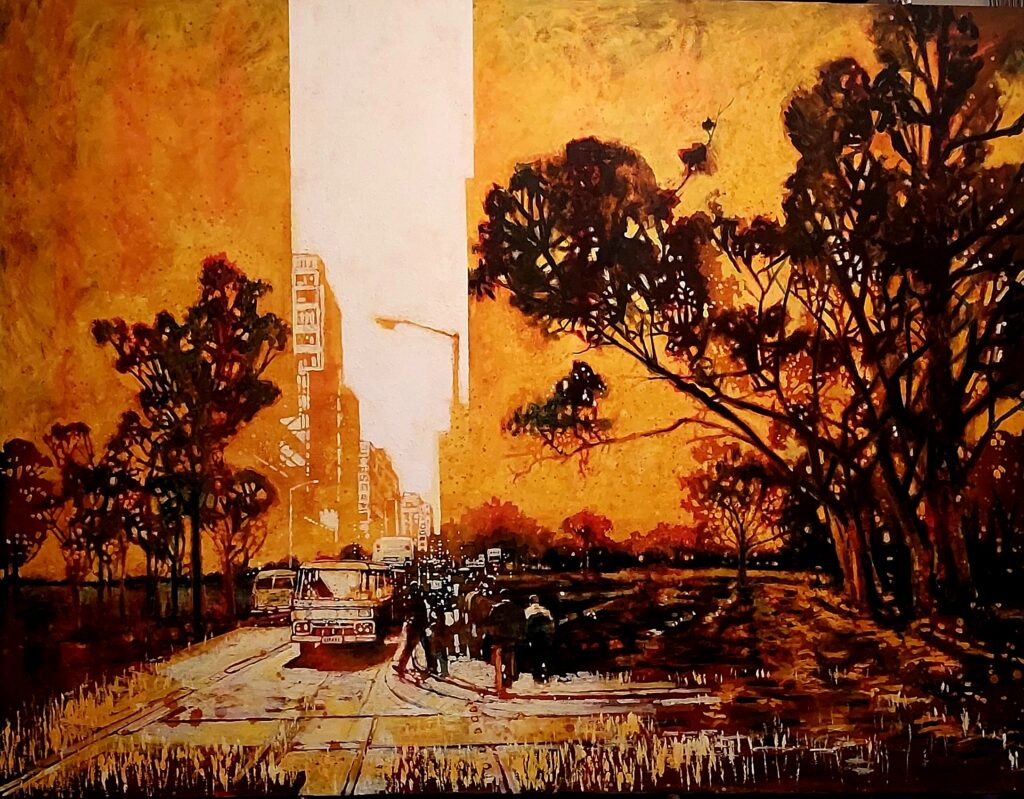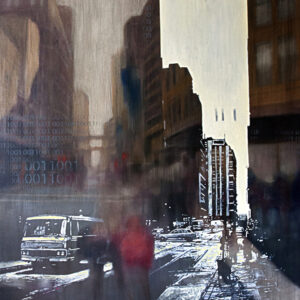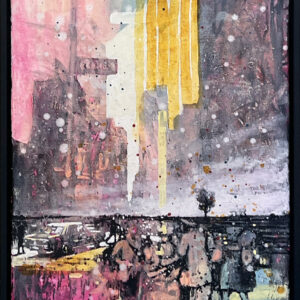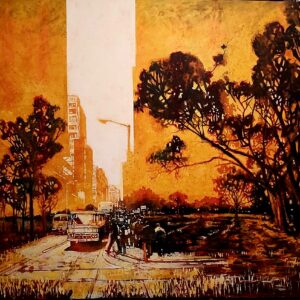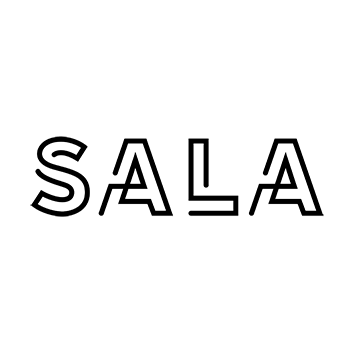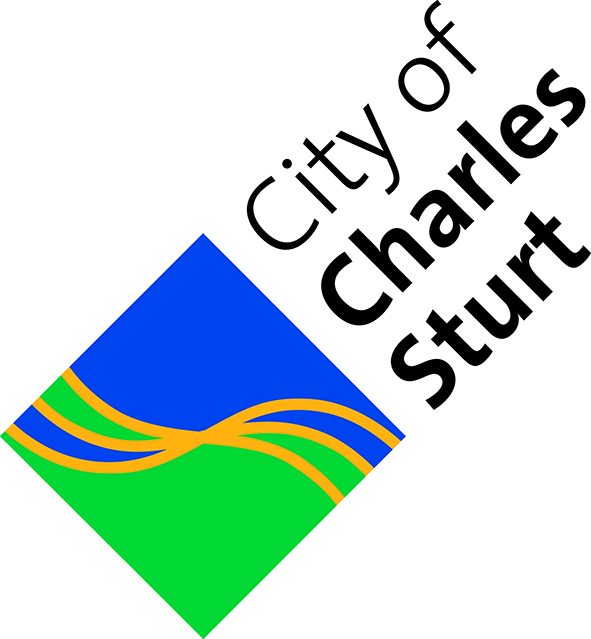MULTIDISCIPLINARY ARTIST
Thom Buchanan’s practice sweeps across drawing, painting, performance, video, installation and monumental public works to interrogate where architecture, time and the body collide. His trademark city-scapes layer charcoal, acrylic and oil mark-making into rectilinear grids, fractal vanishing points and shifting horizons that hover between utopian possibility and dystopian unease. By exposing the physiological and psychological weight of built environments, Buchanan invites viewers to step inside elastic worlds where streets stretch, memories echo and futures feel both imminent and unstable.
A UniSA Visual Arts (Hons) graduate, Buchanan has live-painted a 28-metre backdrop beside Australian Dance Theatre’s Worldhood, created the touring set for Andrew Bovell’s Things I Know to Be True, and illuminated stages for Adelaide Festival, Vivid Sydney and the Edinburgh Fringe. He has exhibited in China, Hong Kong, New York, and New Zealand, been a Glover Art Prize finalist and won the Hadley Art Prize People’s Choice, and in 2025 became the inaugural Brown Falconer Architects Artist-in-Resident. His work now resides in private and corporate collections worldwide.
ARTIST STATEMENT
Fractal Paradigm examines the evolving tension between built environments and the natural world—interrogating the ways we inscribe ourselves onto the landscapes we inhabit, and how, in turn, those environments shape our perceptions, histories, and futures.
Spanning imagined futures and lingering echoes of the past, this body of work invites a layered reading of time and space. Architectural structures emerge and disintegrate, organic forms collapse into geometry, and vanishing points recur as subtle thresholds—drawing the viewer into spaces that oscillate between intimacy and vastness, permanence and flux.
These works do not seek resolution. Rather, they pose questions—about progress, decay, memory, and transformation. Through drawing and painting, I employ distortion, fragmentation, and scale to explore the constructed nature of perception itself, and the shifting thresholds between order and entropy.
At the core of this practice lies a preoccupation with how space is occupied, remembered, and reimagined. As our cities expand and our ecological thresholds narrow, how might we conceive of environments that reflect both critical reflection and creative custodianship?
I see the role of the artist not as a provider of answers, but as a provocateur—someone who renders complexity visible, and asks: what new paradigms might emerge from the fractures of the old?
